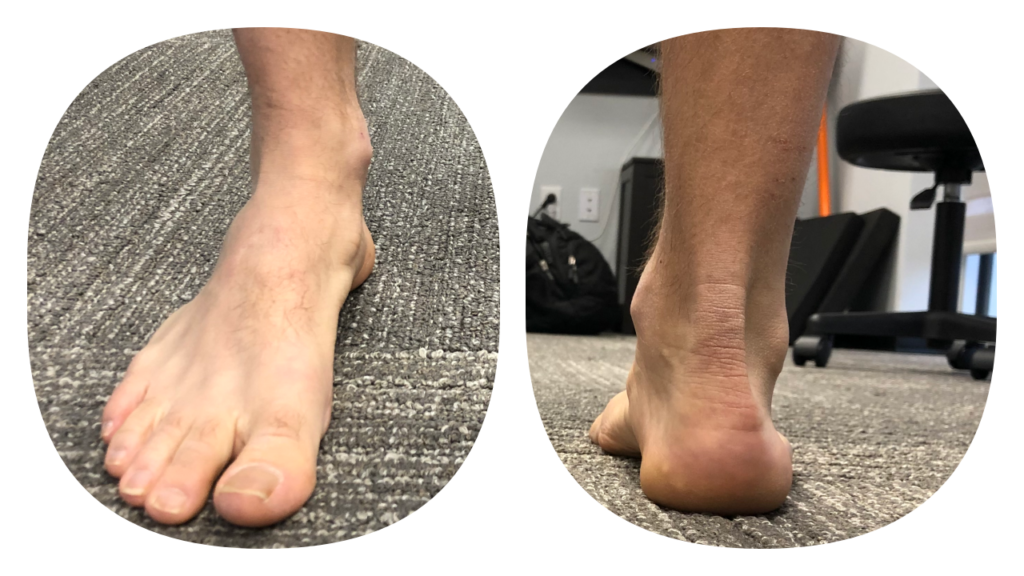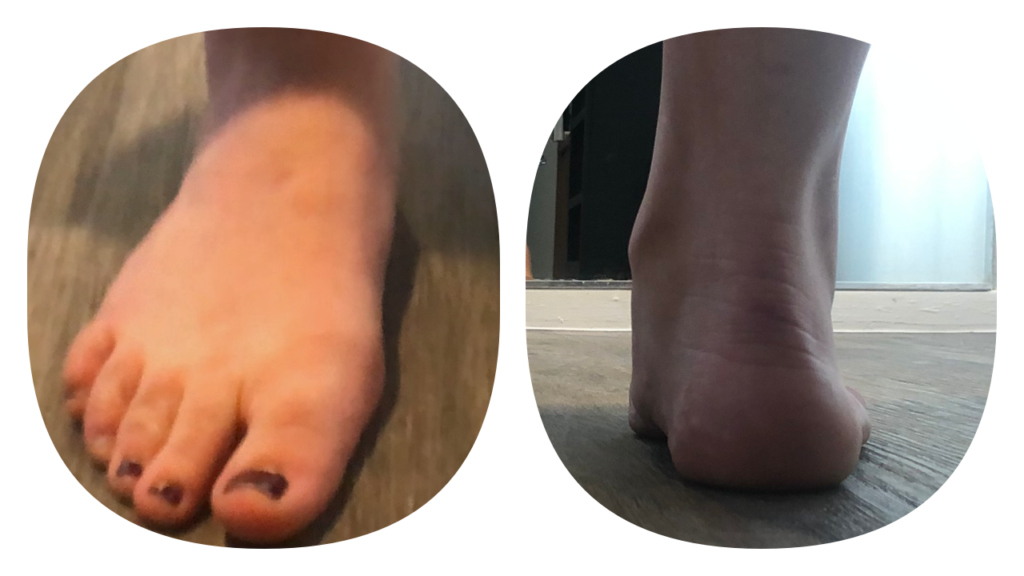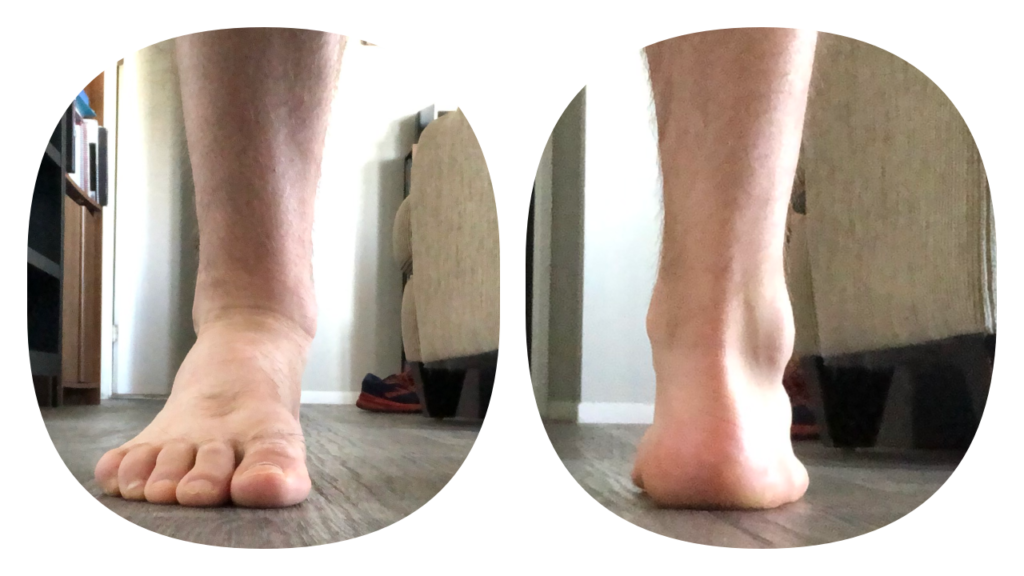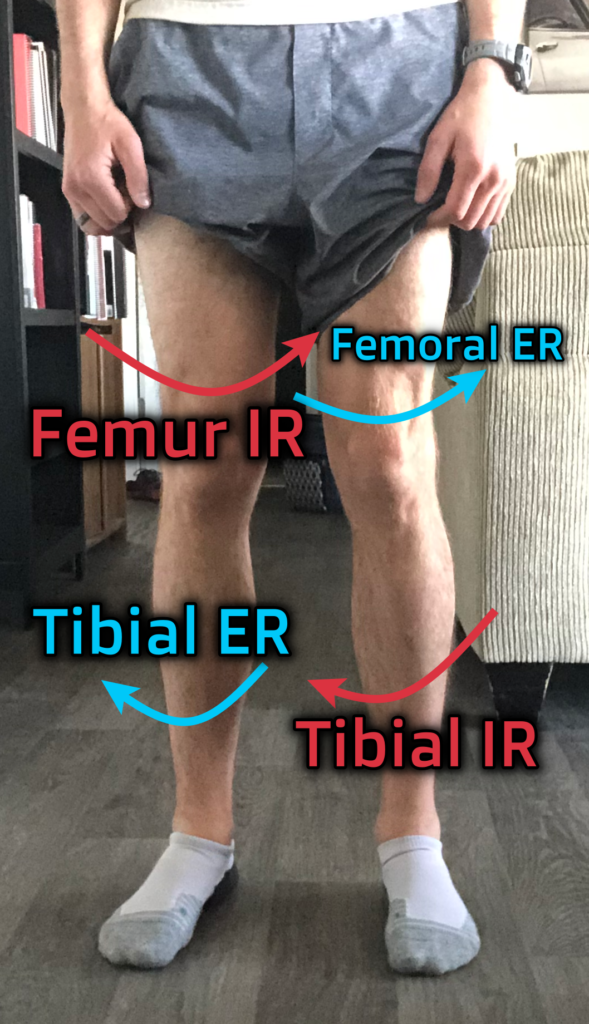 20 Second Tight Psoas Release (& Fix Long-Term)
20 Second Tight Psoas Release (& Fix Long-Term)
The Zac Cupples Show
🏃 Tired of searching for how to move better on youtube? Get personalized coaching with myself and my coaches: 🚀 Unlock Hip Flexor Freedom in Seconds! 🚀 Discover the secret to banishing hip flexor tightness with lightning speed! Dive into a game-changing routine that promises to transform your mobility and comfort in under a minute. Say goodbye to discomfort and hello to effortless movement. You'll have the chillest psoas in da game! #psoas #HipFlexor #posture #pain #mobility ⏰ TIMESTAMPS ⏰ (00:00) - This release WORKS (01:07) - How long does it last though? (the long...
info_outline Fix Rib Flare FAST (In Less Than 5 Minutes a Day)
Fix Rib Flare FAST (In Less Than 5 Minutes a Day)
The Zac Cupples Show
🏃 Tired of searching for how to move better on youtube? Get personalized coaching with myself and my coaches: 🌟 **Transform Your Posture: The Ultimate Rib Flare Fix!** 🌟 Dive into a groundbreaking journey to reshape your ribcage and enhance your mobility. Discover three pivotal exercises designed to address the common yet overlooked issue of rib flare, transforming not just your posture but your overall movement quality. **Embark on your transformation journey now!** #RibFlare #Posture #Mobility (00:00) - Can this even be fixed? (00:41) - This MASSIVE mistake ruins your results...
info_outline 3 Exercises That Fix 90% of Problems
3 Exercises That Fix 90% of Problems
The Zac Cupples Show
🏃 Tired of searching for how to move better on youtube? Get personalized coaching with myself and my coaches: 🌟 Unlock Ultimate Mobility: A Game-Changer for Pain-Free Movement! 🌟 Embark on a transformative journey to conquer common mobility restrictions with three groundbreaking exercises. Dive into a world where enhanced flexibility, strength, and performance are within your grasp. **Experience the revolution in mobility today!** #Mobility #PainFreeLiving #Flexibility ⏰ TIMESTAMPS ⏰ (00:00) - Rotation nation (01:33) - The reason movement becomes limited (03:49) - How...
info_outline Fix Pooch Belly Fast (In Less Than 5 Minutes a Day)
Fix Pooch Belly Fast (In Less Than 5 Minutes a Day)
The Zac Cupples Show
🏃 Tired of searching for how to move better on youtube? Get personalized coaching with myself and my coaches: 🌟 **Unlock the Secret to a Flatter Belly - No Crunches Required!** 🌟 Discover groundbreaking exercises that defy traditional fat loss and posture correction methods. Dive into a revolutionary approach that reshapes your abdominal appearance by addressing the underlying postural components. Say goodbye to the pooch belly with simple, effective moves that promise visible changes. **Embark on your journey to a sleeker silhouette today!** #FlatterBelly #PostureCorrection...
info_outline How To Improve Sitting (It's Not JUST Posture)
How To Improve Sitting (It's Not JUST Posture)
The Zac Cupples Show
🏃 Care about improving your health, mobility, and fitness? Work with myself or one of my coaches. Schedule here: 🌟 **Transform Your Sitting Experience!** 🌟 Unlock the secret to comfortable sitting with groundbreaking strategies that defy conventional wisdom. From eye-saving techniques to posture-transforming exercises, this video is your ultimate guide to conquering discomfort in the digital age. Say goodbye to soreness and hello to a new era of ergonomic enlightenment. **Dive in and revolutionize the way you sit today!** #SittingComfort #Ergonomics #sitting #HealthyPosture...
info_outline Fix Posture and Muscle Imbalances FAST
Fix Posture and Muscle Imbalances FAST
The Zac Cupples Show
🏃 Care about improving your health, mobility, and fitness? Work with myself or one of my coaches. Schedule here: 🌟 Unlock Symmetry: Break Free from Imbalance and Posture Myths 🌟 Feeling off-kilter, twisted, or battling muscle imbalances? It's time to challenge the conventional stretch-and-strengthen approach and explore the truth behind achieving a more balanced body. This video is your guide to debunking myths and embracing the nuances of your unique posture. What You'll Discover: - Insight into why striving for perfect symmetry might not be the goal. - The critical role of the...
info_outline Fix Your Shoulder Internal Rotation FAST
Fix Your Shoulder Internal Rotation FAST
The Zac Cupples Show
🏃 Care about improving your health, mobility, and fitness? Work with myself or one of my coaches. Schedule here: 🌟 Transform Your Shoulder Mobility: The Ultimate Guide 🌟 Struggling with limited shoulder internal rotation? Discover the game-changing exercise that's revolutionizing shoulder health and performance. This video is your roadmap to unlocking the full potential of your shoulders, ensuring you can reach, lift, and perform without pain. What You'll Learn: - The critical role of the rib cage in achieving optimal shoulder rotation. - A step-by-step guide to exercises that...
info_outline You Won't Believe What This Does for Your Neck
You Won't Believe What This Does for Your Neck
The Zac Cupples Show
🏃 Care about improving your health, mobility, and fitness? Work with myself or one of my coaches. Schedule here: 🌟 Unlock Neck Comfort: Overlooked Solutions for Persistent Pain 🌟 Tired of neck pain that just won't quit, even after stretching, chin tucks, and posture adjustments? This video is your key to unlocking the relief you've been searching for. What You'll Discover: - Innovative strategies to address often overlooked factors contributing to neck discomfort. - A transformative exercise targeting the thoracic spine, the true base of your neck, for immediate relief. -...
info_outline 3 Exercises That Fix 90% of Low Back Pain
3 Exercises That Fix 90% of Low Back Pain
The Zac Cupples Show
🏃 Care about improving your health, mobility, and fitness? Work with myself or one of my coaches. Schedule here: 🌟 Transform Your Lower Back Comfort with Just 3 Moves! 🌟 Battling lower back discomfort? It's time to revolutionize your approach to back health with three essential movements designed to enhance mobility and alleviate pain. What's Inside: - Discover three foundational movements to address common lower back mobility needs. - Learn techniques to distribute spinal load more evenly, ensuring each segment moves optimally. - Master the art of creating more space in your...
info_outline This INSTANTLY Improves Your Mobility
This INSTANTLY Improves Your Mobility
The Zac Cupples Show
🏃 Care about improving your health, mobility, and fitness? Work with myself or one of my coaches. Schedule here: 🌟 Unlock Incredible Shoulder Mobility with Just One Exercise! 🌟 Are you seeking a quick and effective way to enhance your shoulder mobility? Look no further! This video unveils a simple yet powerful exercise that can revolutionize your shoulder flexibility and strength. What You'll Discover: - A unique hanging exercise that expands shoulder joint space and improves mobility. - Techniques to integrate rib cage dynamics into your routine for optimal shoulder movement. -...
info_outlineA deep dive into possible foot compensations
They say when the foot hits the ground, everything changes, but what if your feet hit the ground in all types of wonky ways?
There seems like a bazillion different foot presentations:
- Flat feet
- High arches
- Bunions
- Plantarflexed first rays
- Oh my!
We haven’t even talked about how the rest of the body can influence these strategies. YIKES.
Is there a way to make the feet ridiculously simple?
I think so!
Really, all you have to do is restore the two “normal” strategies of the feet, and that can lead to profound effects on any weird foot stuff you may see.
What are they?
Check out Movement Debrief Episode 149 below to find out!
Watch the video here for your viewing pleasure.
If you want to watch these live, add me on Instagram.
Show notes
Check out Human Matrix promo video here
Here are some testimonials for the class
Want to sign up? Click on the following locations below:
May 29th-30th, 2021 Boston, MA (Early bird ends April 25th at 11:55 pm!)
August 14th-15th, 2021, Ann Arbor, MI (Early bird ends July 18th at 11:55 pm!)
September 25th-26th, 2021, Wyckoff, NJ (Early bird ends August 22nd at 11:55 pm)
October 23rd-24th, Philadelphia, PA (Early bird ends September 26th at 11:55pm)
November 6th-7th, 2021, Charlotte, NC (Early bird ends October 3rd at 11:55 pm)
Montreal, Canada (POSTPONED DUE TO COVID-19) [6 CEUs approved for Athletic Therapists by CATA!]
Or check out this little teaser for Human Matrix home study. Best part is if you attend the live course you'll get this bad boy for free! (Release date not known yet :(
Here is a signup for my newsletter to get nearly 5 hours and 50 pages of content, access to my free breathing and body mechanics course, a free acute:chronic workload calculator, basketball conditioning program, podcasts, and weekend learning goodies.
Bill Hartman - Daddy-O Pops, my mentor and one of the top people I go to for all things biomechanics
Lateral wedges from Foot MGMT - These are the wedges I'll put in shoes to drive calcaneal position
Ipsilateral Hip Abductor Weakness After Inversion Ankle Sprain - A great study that shows the link between the ankle and the hip
Which Limitations to Treat First? - This post goes into how to attack movement compensations in the most efficient manner possible.
Pathogenesis of Hallux Valgus - This article outlines the biomechanics involved with bunions
Belly Breathing, Cramping, and Exhales – Movement Debrief Episode 77 - Here is where I talk about cramping and some potential reasons
Foot compensatory strategies
Question: Can you talk about different foot presentations as compensatory strategies?
Watch the answer here.
Answer: Well before we talk about foot compensations, why don't we first talk about foot...normalsations? Ooh, I like that. Could be the word of 2021!
There are three different foot orientations that correspond with the three different phases of gait:
- Initial contact
- Midstance
- Propulsion
Here are the characteristics of each foot position in each phase:
| Joint | Initial Contact | Midstance | Propulsion |
| Talocrural | Plantarflexing | Dorsiflexing | Dorsiflexed |
| Subtalar | Inversion | Eversion | Inversion |
| Midtarsal | Supinated | Pronated | Supinated |
| First Ray | Slight plantarflexed | Dorsiflexed | Plantarflexed |
| Big Toe | Dorsiflexed | Plantarflexed | Dorsiflexed |
What we want to ensure is that our fellow fam can express all of these available movement options both passively and with their desired terminal task. On the low end, this could be walking. On the high end, this could be a cut.
How would you know what to look for?...Wait for it....
I'M GLAD YOU ASKED!!!!
We'd simply first test to see what range of motions are available.
You'll want to peep the following areas:
- Ankle range of motion
- Big toe range of motion
- Midfoot flexibility
- standing posture
- Dynamic activities (gait and relevant activities)
Although I'm typically not the biggest fan of using static postures as an assessment piece, feet are the one exception to the rule. Seeing how the foot can organize on the ground can be quite telling as to what compensatory strategies one may be biased to.
However, they cannot tell the whole story, and that's why range of motion testing is so useful.
For example, it's not uncommon for the calcaneus to appear as though it's everted in the standing position.
However, there have been many times that I've tested these fine fam on the table, only to find out their eversion range of motion is LOL status. In fact, I would argue that this compensatory strategy is one of the most commonly seen (and missed). More on that later ;)
If you only looked at standing foot posture, you wouldn't be able to appreciate the subtle difference, and your fam would trick the snot outta you. Those pesky supreme clientele :)
Common foot compensations
Most foot compensations basically involve a person having a bias towards one extreme of a given range, and a subsequent inability to hit the opposing range.
Although there are many foot compensations that we can see, I'll go into the three most common variations that I run into:
The supinated foot
[caption id="attachment_13903" align="alignnone" width="810"] Notice the high arch, the space between the toes, and how "centered" the heel is.[/caption]
Notice the high arch, the space between the toes, and how "centered" the heel is.[/caption]
This is a situation where the foot is in that initial contact position/propulsion phase, so you'll see the following things:
- Inverted calcaneus (with a loss of passive eversion)
- Supinated midtarsal joint (high arch)
- plantarflexed first ray (there is often a space between the first and second toe)
In terms of differences between initial contact and propulsive feet positions, Daddy-O Pops Bill Hartman does a great job explaining the difference here.
the pronated foot
[caption id="attachment_13904" align="alignnone" width="810"] Look at the everted calcaneus, flatness of the arch, and how close together the toes are.[/caption]
Look at the everted calcaneus, flatness of the arch, and how close together the toes are.[/caption]
This is essentially a foot in midstance orientation, with the following findings:
- Everted calcaneus
- Pronated midtarsal joint (low arch/flat feet)
- Dorsiflexed first ray (first and second to are often bunched together)
Secondary foot compensations
In the previous two compensatory strategies, you basically have the same general movement happening throughout the foot complex: either pronation or supination.
Any other compensatory strategy typically involves a counterrotation in the opposing direction. So if the calcaneus is inverted, you may see pronation-based compensations in the remaining parts of the foot: mid-tarsal joint, first ray, big toe, etc. Vice versa with the everted calcaneus: supinatory-based movements. These actions could occur at one joint or multiple.
The most common compensation that I see/worry about:
The inverted calcaneus with a pronated mid-tarsal joint
[caption id="attachment_13905" align="alignnone" width="810"] You can see how the calcaneus looks everted, and the toes are a bit closer together compared to our supinated foot model.[/caption]
You can see how the calcaneus looks everted, and the toes are a bit closer together compared to our supinated foot model.[/caption]
This one will trick the F out of you, fam. Because it will appear that the calcaneus is everted, but it's not.
What's happening instead is the midfoot pronates, which drags the calcaneus towards eversion, but it never really gets there.
How do I know this?
This foot type has a loss of passive calcaneal eversion.
If I can't evert the calcaneus, then the calcaneus cannot be everted. Instead, it gets dragged towards eversion, creating a twist between the subtalar joint and midtarsal joint; problems potentially ensue.
Here are the common findings with this presentation:
- Externally rotated tibia
- Internally rotated femur at the knee joint
- Decreased calcaneal eversion
- Loss of big toe extension
The most important component of restoring foot dynamics
So there can be several different compensatory strategies that happen at the feet that can make assessment be TOTALLY HARD.
But you know me, fam, I want to make the foot RIDICULULOSULY SIMPLE for you.
What is the most important foot movement to address when it comes to restoring movement options?
Priority #1: Restore calcaneus dynamics
Yes folks. Getting the calcaneus to invert and evert can restore most of the foot/ankle movement options you see limited.
If you see an inverted calcaneus, drive calcaneal eversion. You do this by cueing inside heel contact. The supine cross-connect is a great starting point for this movement if you are working with a narrow infrasternal angle.
If you have someone with a wide infrasternal angle, you can use the supine hip extension with overhead reach.
If you see an everted calcaneus, drive calcaneal inversion. You do this by cueing outside heel contact. One of my go-to moves is to either perform high-depth squats to drive this position.
How to increase foot and ankle range of motion
Question: I would like to know what drives more supination, pronation, dorsiflexion, and plantarflexion of the ankles? because I have high arches but externally rotated feet, and more exhalation seems to increase even more the height of the arches so that the bones and veins protrude at the top side.
Watch the answer here.
Answer: Alright alright. Your foot and ankle dynamics are whack, how do I make that better, Zac?
Well fam, we need to dive into what corresponding lower extremity movement occur with each of the respective foot and ankle actions discussed.
Because if you move your foot into various positions, and you keep going...and going...and going...a relative motion will occur at the femur, pelvis, etc. Conversely, you can drive particular motions up the chain to place the foot where you need it.
Let’s make life easy for you. Here is a super simple table that illustrates what movements are associated with various foot actions (like the store, but better prices ;)
| Foot/ankle movement | Corresponding relative hip motion |
| Dorsiflexion | Flexion |
| Plantarflexion | Extension |
| Inversion/supination | adduction |
| Eversion/pronation | abduction |
**This table assumes primary compensations, no secondary compensations. More on that later
Now that you’ve seen my table, let’s apply the F out of it and look at some moves that apply this concept:
Dorsiflexion
Squats are my de facto move to increase ankle dorsiflexion.
Plantarflexion
Although plantarflexion restrictions are a bit rare, getting hip extension is the major key to increasing this. You want to try and get towards end-range hip extension while keeping the stack if you can. The supine cross-connect mentioned above is actually a great choice for this, but if you aren’t there yet, start with the wall stride.
Supination
Adduction for the win. Doing a copenhagen side plank can be money for this.
Pronation
Driving abduction with lateral squat variations are my go-to. I’d start with the table side stride.
Then work toward a lateral squat variation.
Untwisting the legs
Question: So midstance favors internal rotation, pronation, hamstrings, and anterior gluteus medius. However, it's common that the left foot is already pronated, so why do we often focus on driving internal rotation on the left side?
Watch the answer here.
Answer: The reason for this is because we are a bunch of twisted sisters (80’s hair included).
AND WE AREN’T GONNA TAKE IT!
What I mean by that is it’s quite common to have a “twist” occurring between the femur and the tibia. That means that the femur will be rotating in one direction, and the tibial will rotate in the opposite direction. This situation causes a mismatch in the common rotational action that this fam is referring to.
The most common compensatory pattern in this sense is:

- Left femoral external rotation with tibial internal rotation and foot pronation
- Right femoral internal rotation with tibial external rotation and foot supination
This presentation will usually see a loss of left internal rotation measures and right external rotation measures.
It’s this specific presentation where you work on “untwisting” the lower extremities. Basically, you reverse the aforementioned positions:
- Left: Drive slight foot supination and femoral internal rotation
- Right: Drive slight foot pronation and femoral external rotation
My go-to move, if you can build up to it, is the bottoms-up shifty split squat series. It’ll humble you if you get it right.
Big toe contraction
Question: Should the big toe dig into the ground with any exercise?
Answer: Big toe flexion occurs during first ray dorsiflexion, which is a part of midstance. Thus, if you need pronation, you might need a spot of big toe flexion.
Foot and ankle movement tests
Question: What movement tests do you use to test feet for compensations?
Answer: Basically, you want to look at all the physiological motions of the foot-ankle complex, which include:
- Ankle dorsiflexion
- Ankle plantarflexion
- Ankle inversion
- Ankle eversion
- Big toe extension
- Big toe extension in dorsiflexion
- Midtarsal pronation and supination
- Static foot posture
- Dynamic foot posture
Sum up
- Loss of foot and ankle dynamics occurs when an individual cannot place the body into a “phase of gait” position.
- Restoring calcaneal dynamics is the most important factor in restoring foot and ankle movement options.
- Relative motions at the hips can be used to drive ankle position
- If there are twists present in the legs, you must drive counterrotation to restore lower extremity dynamics
